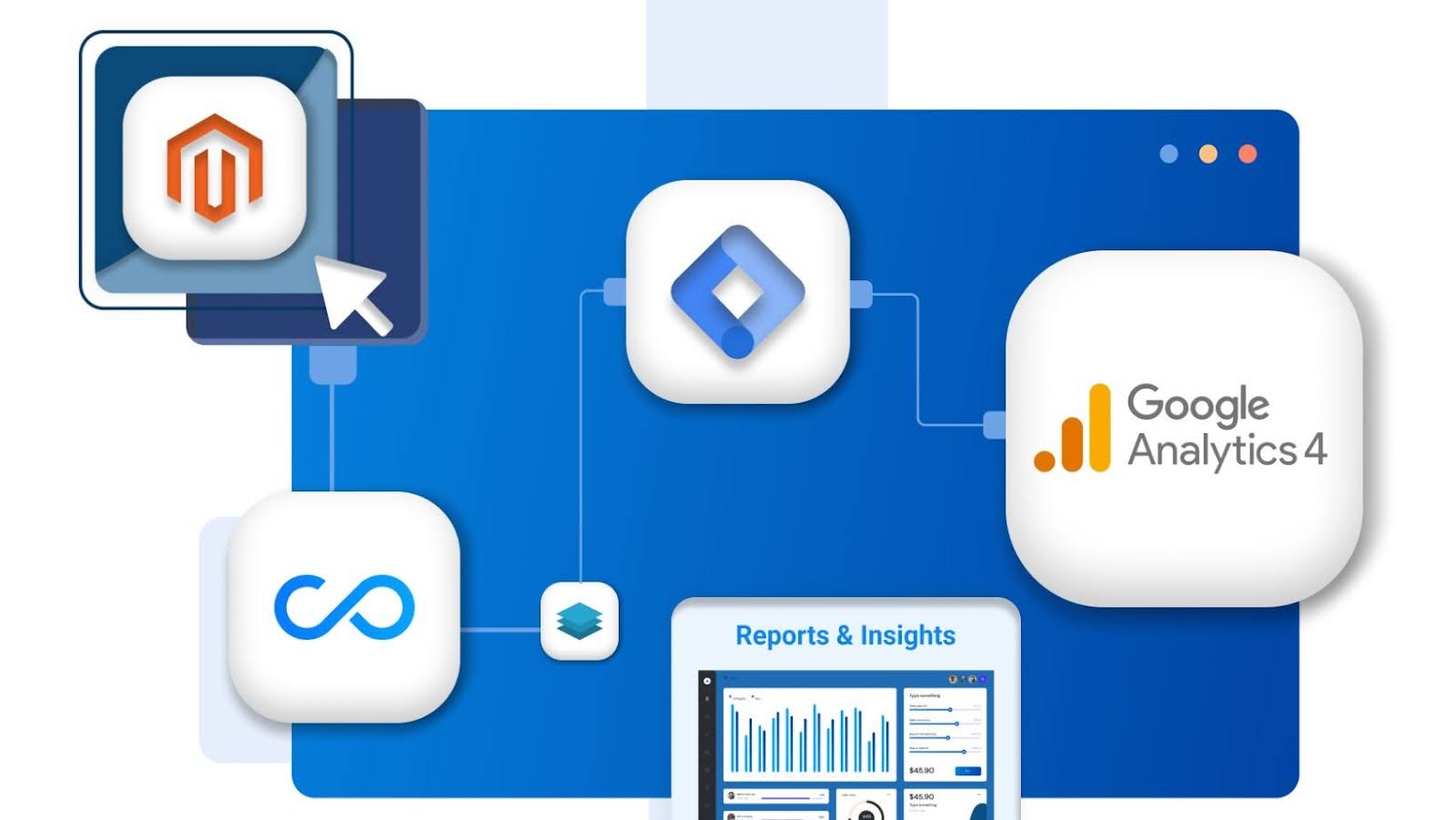Introduction to Google Analytics 4 and Magento Integration: Unlocking Advanced Insights
Google Analytics 4 (GA4) represents a paradigm shift in digital analytics, offering advanced features and capabilities to help businesses gain deeper insights into user behavior and drive actionable insights. When integrated with Magento, GA4 empowers e-commerce businesses to track and analyze customer interactions across their online store, enabling data-driven decision-making and personalized customer experiences.
Configuring GA4 with Magento 2: A Step-by-Step Guide
Step 1: Create a GA4 Property
The first step in configuring GA4 with Magento 2 is to create a new property within your Google Analytics account. Navigate to the Admin section of your Google Analytics account, select “Create Property,” and follow the prompts to set up a new GA4 property. Once created, note down the Measurement ID provided by Google Analytics.
Step 2: Install Magento 2 GA4 Extension
Next, install a Magento 2 GA4 extension to facilitate the integration between your Magento store and Google Analytics 4. Choose a reputable extension from the Magento Marketplace or other trusted sources, and follow the installation instructions provided by the developer. Be sure to configure the extension settings with your GA4 Measurement ID and any additional parameters required for tracking.
Step 3: Configure Data Collection Settings
Once the Magento 2 GA4 extension is installed, navigate to the extension settings within your Magento admin panel. Configure the data collection settings according to your preferences, including enabling enhanced e-commerce tracking, setting up custom dimensions and metrics, and defining event tracking goals relevant to your e-commerce objectives.
Step 4: Test and Validate Tracking
After configuring the GA4 integration settings, it’s crucial to test and validate tracking to ensure that data is being collected accurately.

Perform test transactions, page views, and other user interactions on your Magento store while monitoring the real-time reports in Google Analytics. Verify that data is being recorded correctly and that events and conversions are tracked as expected.
Leveraging GA4 Insights for E-commerce Success: Advanced E-commerce Reporting
With GA4 integrated into your Magento 2 store, you gain access to advanced e-commerce reporting capabilities that provide valuable insights into your customers’ purchasing journey. Track key metrics such as conversion rates, average order value, and cart abandonment rates to identify areas for optimization and improvement.
Enhanced User Engagement Tracking
GA4 enables more granular tracking of user interactions across your Magento store, allowing you to understand how customers engage with your website at a deeper level.

Track events such as product views, add to cart actions, and checkout completions to identify popular products, user preferences, and potential pain points in the buying process.
Conclusion
In conclusion, configuring GA4 with Magento 2 opens up a world of possibilities for e-commerce businesses looking to elevate their analytics game and drive actionable insights. By following the steps outlined in this guide and leveraging the advanced features of GA4, businesses can gain a deeper understanding of their customers, optimize their online store for better performance, and ultimately drive sustainable growth and success.
My name is Andrea Thompson and I’m a home based freelance writer. I’m 23 years old, married to my best friend, and mother to a wonderfully independent and opinionated 3 year old girl and step-mother to a sweet seven year old boy. I live in a tiny, little town in Kentucky, where I spend my free time fishing with my kids.
Writing has always been my passion, which I followed through high school, and for a while in college. Life happened, and once I discovered we were pregnant, I switched directions; opting for the healthcare industry because of the stability.
Finally, years later, I was in a place where I could leave the day job that never truly made me happy, and pursue my dreams. I’ve built, and am still building, my writing career from scratch. But, I’m passionate and I’m good at what I do. And, in the end, I can prove to my daughter that she can do anything she wants with this life.





